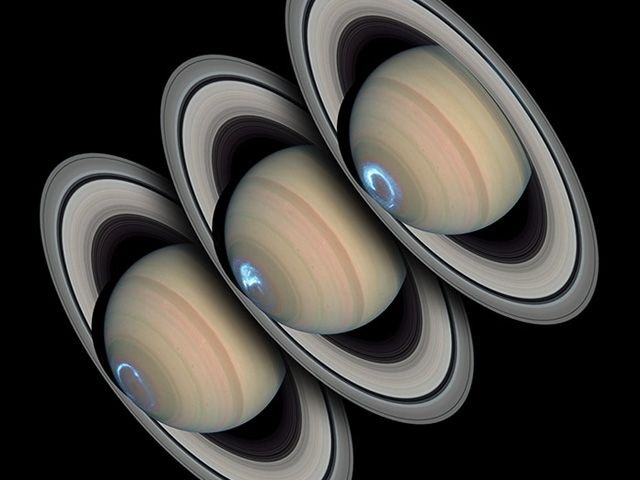Persistent Saturnian Auroras

Explanation:
Are Saturn's auroras like Earth's?
To help answer this question, the
Hubble Space Telescope and the
Cassini spacecraft monitored Saturn's South Pole
simultaneously as
Cassini closed in
on the gas giant in January 2004.
Hubble snapped images in
ultraviolet light, while Cassini recorded
radio emissions
and monitored the
solar wind.
Like on Earth,
Saturn's auroras
make total or partial
rings around
magnetic poles.
Unlike on Earth, however,
Saturn's auroras persist for days, as opposed to only minutes on
Earth.
Although surely created by
charged particles entering the atmosphere,
Saturn's auroras also appear to be more closely modulated by the
solar wind than either Earth's or
Jupiter's auroras.
The
above sequence shows three Hubble images of
Saturn
each taken two days apart.
Authors & editors:
Robert Nemiroff
(MTU) &
Jerry Bonnell
(USRA)
NASA Web Site Statements, Warnings,
and Disclaimers
NASA Official: Jay Norris.
Specific
rights apply.
A service of:
LHEA at
NASA /
GSFC
& Michigan Tech. U.

